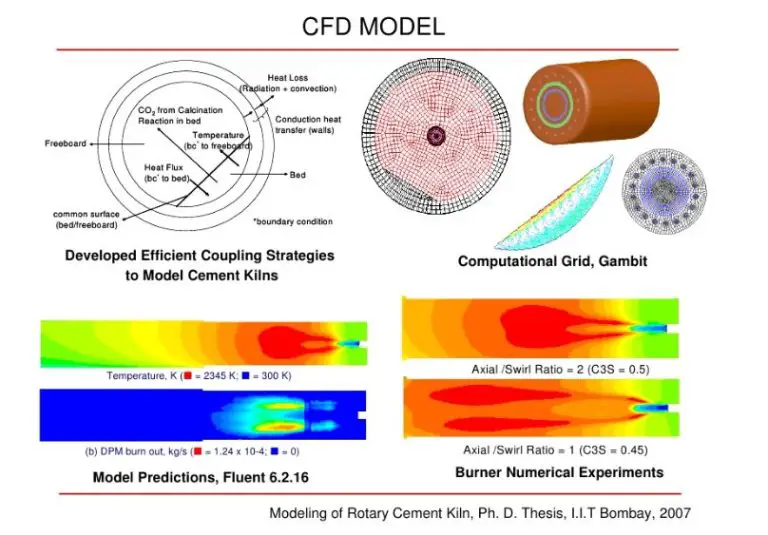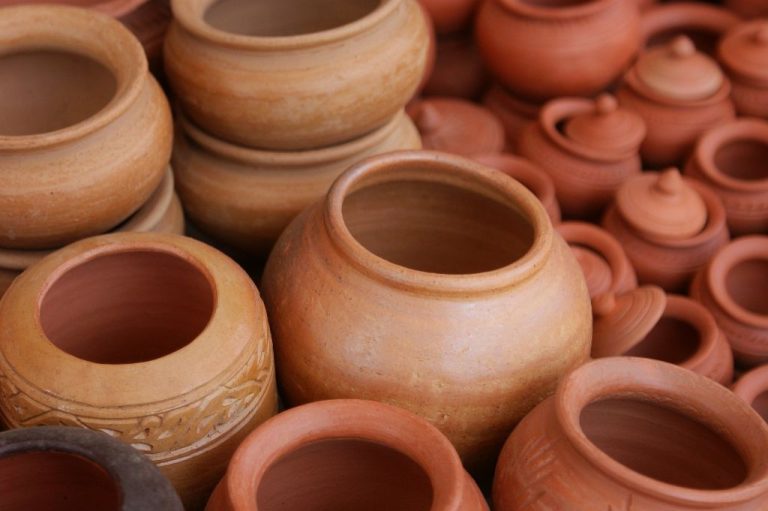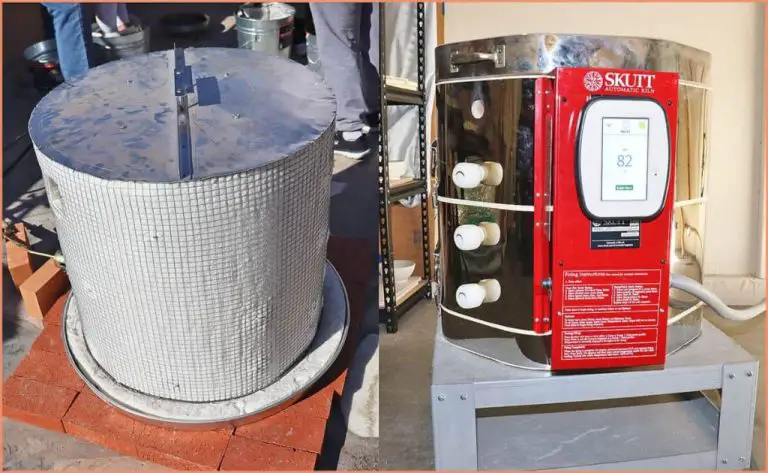What Is Air Dry Foam Clay?
What is Air Dry Foam Clay?
Air dry foam clay, also known as foam clay or sculpy air dry clay, is a lightweight modeling clay that air dries to a hard, durable foam.[1] It is made from a polymer resin or glue mixed with additives like glycerin or vinegar, and an expandable foam filler material.[2] When the clay is exposed to air, the moisture evaporates, causing the polymer resin to set and harden while the foam particles expand slightly. This gives the finished product a lightweight, rigid foam structure.
Air dry foam clay differs from polymer baking clays like Sculpey. While polymer clays require baking to set the plasticizers, foam clay air dries. It also has a lighter, airier texture than dense polymer clay. Air dry clays made with natural materials like cellulose differ as well, having a more earthy, ceramic-like finish when dry.
Types of Air Dry Foam Clay
There are several major brands and types of air dry foam clay, each with their own unique properties and characteristics:
Some of the most popular and widely available brands include:
- Crayola Air Dry Clay – This lightweight, non-toxic clay comes in bright colors like white, terracotta, and neon. It has a smooth, doughy texture and air dries in 1-2 days. Crayola is a good choice for kids and beginners. [1]
- DAS Air Dry Clay – DAS has a smooth, creamy texture and comes in white and terra cotta colors. It’s one of the most versatile and durable air dry clays. DAS clay can be sanded, drilled, and painted once fully cured. [2]
- Original Sculpey Air Dry Clay – With a lightweight, porous texture, Sculpey clay has good sculpting properties. It comes in white and terracotta and can be used for detailed sculptures. Sculpey clay takes 1-3 days to fully cure.
Other air dry foam clays have unique characteristics. Some are extra lightweight and easy to sculpt. Others have porcelain-like properties when cured, allowing for sanding, carving, and painting. The texture can range from smooth and creamy to coarse and porous depending on the brand.
Benefits and Uses
Air dry clay is a lightweight, easy to work with modeling material that doesn’t require baking or firing to harden and cure. This makes it a good choice for beginner modelers and kids. Some key benefits and uses of air dry foam clay include:
Lightweight and Easy to Work With https://fakingwhileyourmaking.com/2019/06/25/the-ultimate-guide-to-foam-clay/ – Air dry foam clay is very lightweight compared to other clays, making it easy to work with for extended periods without hand fatigue. The foam texture is also smooth and pliable.
Doesn’t Require Baking or Firing https://fakingwhileyourmaking.com/2019/06/25/the-ultimate-guide-to-foam-clay/ – Foam clay air dries naturally at room temperature. There is no need for oven baking or kiln firing. It just requires time and air circulation to fully harden.
Good for Kids and Beginners – With no need to bake projects and an easy texture to manipulate, air dry foam clay is an accessible modeling material for kids, beginners and casual crafters.
Projects You Can Make
Air dry foam clay is excellent for making jewelry, figurines, decorative items, and more. The clay is lightweight, easy to mold by hand, and dries into a durable yet slightly flexible material. Foam clay is an accessible art material, suitable for beginners and kids but also fun for more advanced crafters and artists.

Jewelry is one of the most popular items to make with air dry foam clay. The clay can be rolled into beads, charms, pendants, or embellishments. It will dry hard while retaining a velvety, matte texture. Foam clay jewelry is lightweight to wear and can be painted with acrylics after drying.
Figurines, sculptures, dolls, and decorative items are also fun projects to make out of foam clay. The lightweight clay is easy to sculpt by hand into any shape. You can make miniature animals, cartoon characters, holiday ornaments, dollhouse items and more. The finished pieces will be durable yet still somewhat flexible after drying.
To add extra detail and pattern, you can press rubber stamps or molds into the clay. Foam clay can be molded around objects to make interesting shapes. Items like beads, sequins, and fabric can also be embedded.
Working with the Clay
One of the keys to successfully working with air dry foam clay is properly kneading and conditioning it. When you first open a package of foam clay, it will be quite dry and stiff. To make it smooth and pliable for sculpting, you need to knead and work the clay thoroughly. This helps distribute moisture evenly and creates a soft, flexible clay.
Start by cutting or tearing the clay into small, 1-2 inch pieces. Then knead each piece firmly between your fingers or palm. You can also slam a piece into your work surface repeatedly to help soften it. The clay will slowly become softer and more pliable as you knead it. If needed, you can also add a few drops of water while kneading to increase moisture.
Once conditioned, the clay should be smooth, soft, and easy to shape. Avoid over-working the clay at this stage, as it can make the material too sticky. When sculpting, use smooth, firm motions. Do not handle the clay roughly or it can tear. If the clay begins drying out while working, you can add a small amount of water to keep it malleable.
To achieve a smooth surface when sculpting, use plastic wrap or rubber shapers. You can also use rubbing alcohol to help smooth seams and fingerprints. Let the clay firm up slightly before smoothing for best results.
If your sculpture starts sagging or loses shape, let it dry for 10-15 minutes until firmer before continuing. Use wire, tin foil, or other armatures inside larger sculptures for added stability and support. Work in progress stages allowing sections to slightly harden before adding more clay.
Drying and Curing Process
Air dry foam clay needs sufficient time to fully dry and cure before painting or distressing. The drying time depends on the thickness and size of your sculpture. Thinner pieces 1/4 inch or less may dry in 24-48 hours. Larger, thicker pieces can take 3-4 days or longer to fully cure. Ensure your sculpture is completely dry before sanding or painting.
To speed up drying time, you can place your air dry foam clay sculpture in a box or enclosed space with a dehumidifier or desiccant like silica gel packets. The dry air will pull moisture from the clay. You can also use a food dehydrator on the lowest setting under 135°F. Higher temperatures can cause cracking or bubbling. Avoid placing foam clay sculptures in direct sunlight to dry, as this can also overheat the clay.
Check on the clay periodically. When thoroughly dry, the surface should be matte instead of shiny and feel harder and less pliable. The clay will continue to cure and harden more over the next 24 hours after reaching this stage.
Proper drying and curing is crucial for achieving clean edges and smooth surfaces when sanding and finishing your air dry foam clay creation.
Painting and Finishing
When painting air dry foam clay, it’s important to properly seal and prepare the surface first. Acrylic paint works well for painting foam clay and provides a vibrant finish. According to Gathered, applying one or two coats of gesso or acrylic medium to the clay before painting will help seal it and prevent too much paint absorption.
After sealing, acrylic paint can be applied. Acrylics work well on clay since they are flexible when dry and won’t crack if the clay bends or flexes. Gathered recommends acrylic craft paints which provide rich pigmentation designed for crafty projects. Make sure to allow each coat of paint to fully dry before adding another layer.
Once painting is complete, it’s important to seal and protect the finished piece. A clear acrylic sealer like polyurethane can be brushed over the painted clay. This seals the paint and creates a protective barrier against scratches, scuffs or fading over time. According to suggestions on Reddit, standard EVA foam sealants like Plasti Dip also work well for sealing painted foam clay creations.
Storing the Clay
Proper storage is important for keeping unused air dry foam clay soft and workable. The key is to store the clay in an airtight container to prevent it from drying out. According to this source, you should open just one side of the clay package and only remove small, workable amounts at a time. Re-seal the rest in the original packaging.
Many artists recommend storing unused clay in the refrigerator or freezer. The cold temperature helps keep the clay soft and moist. Just be sure to allow refrigerated clay to come back to room temperature before using to prevent cracking. For long term storage of 6 months or more, experts suggest freezing the clay.
Pros and Cons of Air Dry Foam Clay
Air dry foam clay has several benefits compared to polymer clay:
It is very easy to work with and requires no baking, so projects dry quickly and can be completed in less time. The clay is lightweight and affordable, making it accessible for artists of all levels. It’s also non-toxic and safe for kids to use. Because no firing is required, foam clay avoids the risks of under- or over-baking that can affect polymer clay items.
However, air dry clay also has some downsides to consider. The clay takes 1-7 days to fully cure depending on thickness, humidity, and drying conditions. Pieces may crack or break if dried too quickly. Air dry clay is also not waterproof without sealing, so any items left unsealed may become damaged if exposed to moisture. The clay can’t be sanded or smoothed once dry. Projects made with air dry foam clay tend to be more delicate and fragile than polymer clay creations. https://theartofeducation.edu/2019/02/the-pros-and-cons-of-working-with-air-dry-clay/
Overall, air dry foam clay offers a quick, easy, and non-toxic modeling material good for simple crafts, kids’ projects, and items not needing extreme durability. Polymer clay is better suited for detailed sculptures, jewelry, and pieces requiring high strength and precision.
Where to Buy
Air dry foam clay can be purchased from a variety of retailers, both online and in-store. Some of the most popular places to buy foam clay include:
Online retailers: Foam clay can be conveniently purchased online from marketplaces like Amazon (source) and Etsy where many independent artists sell their homemade clay. There are also specialty online retailers like TCT Crafts that focus specifically on craft supplies like air dry clays.
Craft stores: Major national craft chains like Michael’s, Hobby Lobby (source), and Joann Fabric & Craft Stores stock air dry foam clay options in-store and online. These are convenient places to buy if you prefer seeing and touching products in person.
Prices for air dry foam clay range from about $5-$20 for an 8 oz block or brick. Buying in bulk packs can also help lower the per-unit price. Expect specialty branded clays marketed for cosplay and modeling to be at the higher end of the price range while generic clays may cost less.





